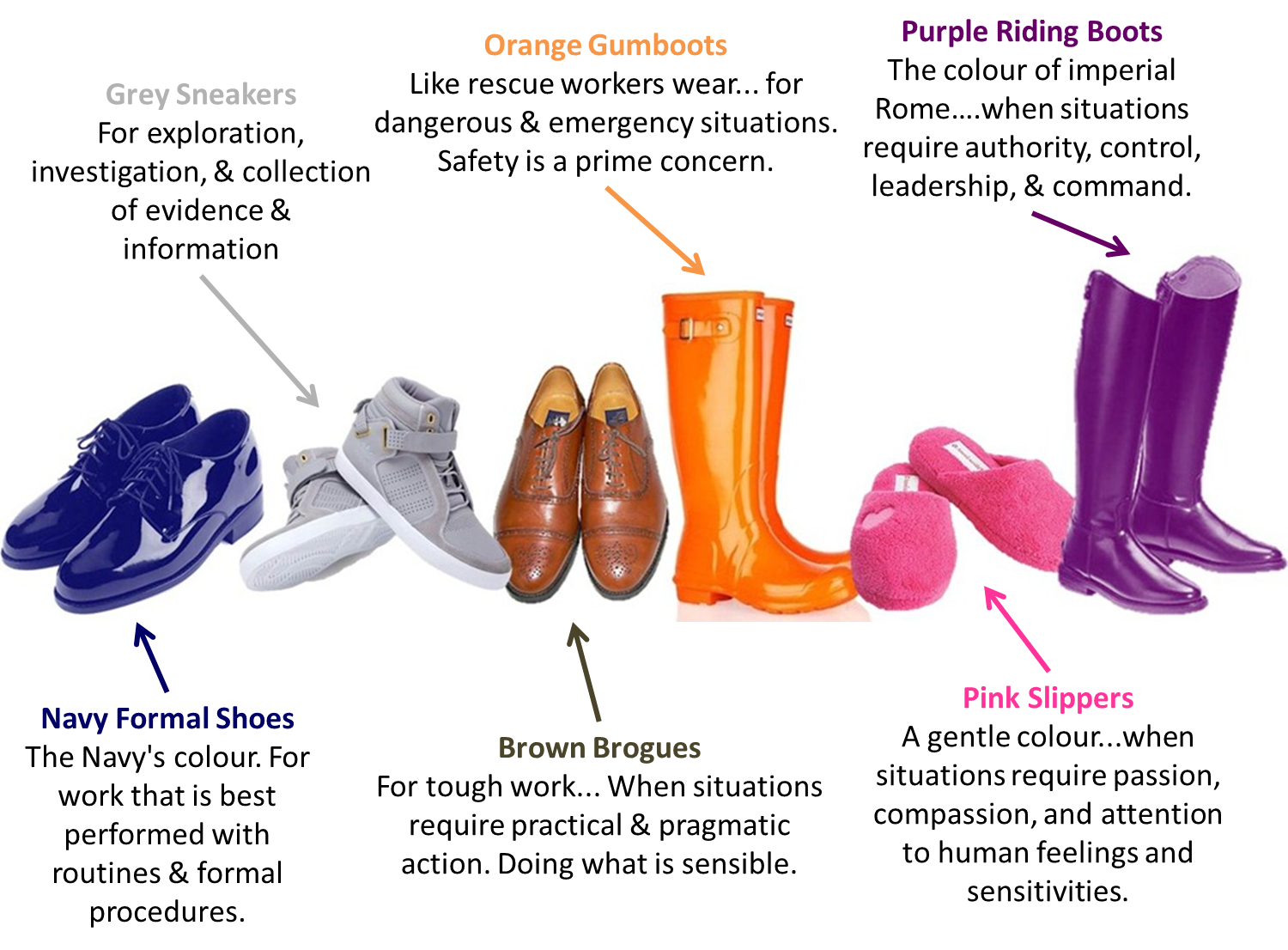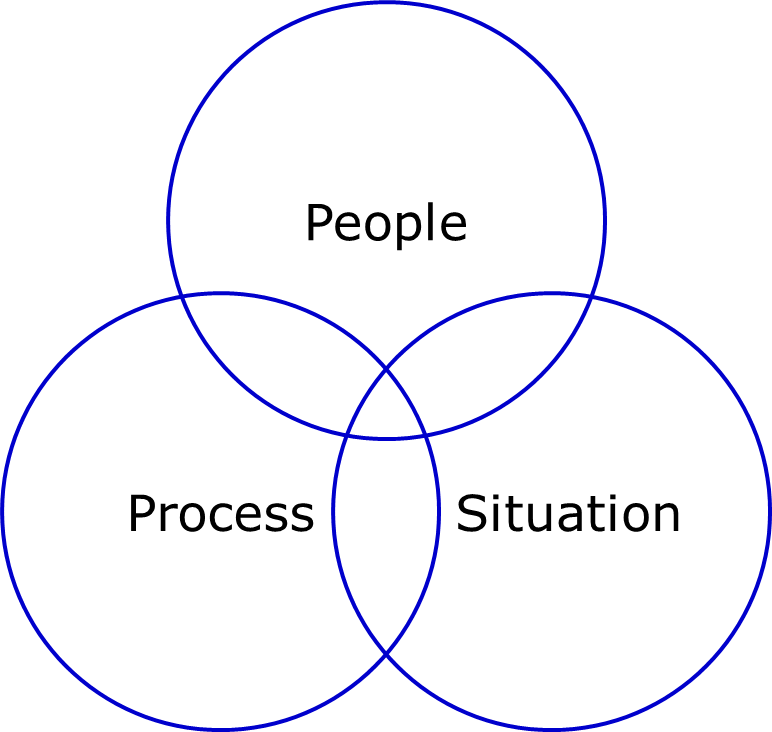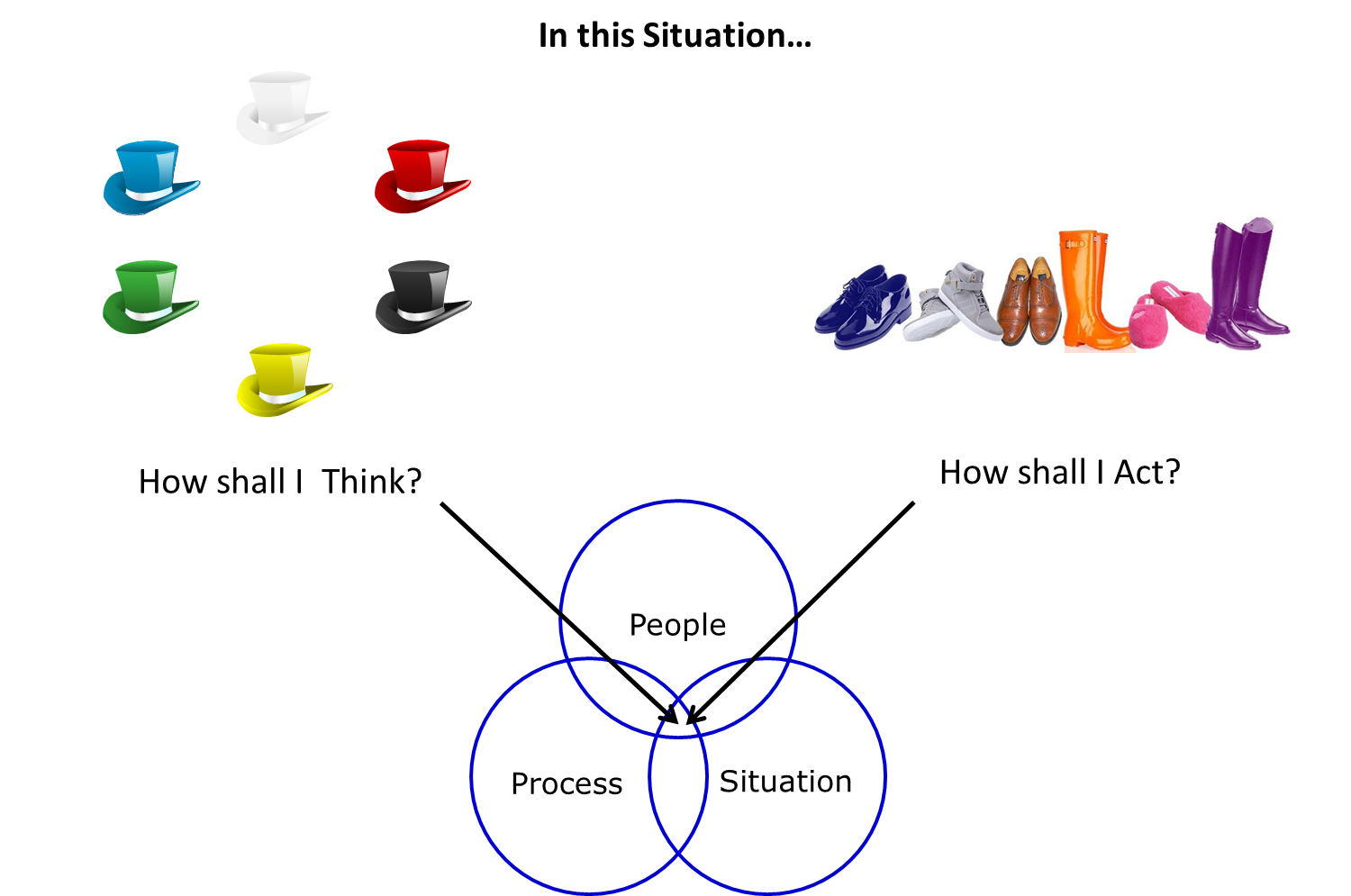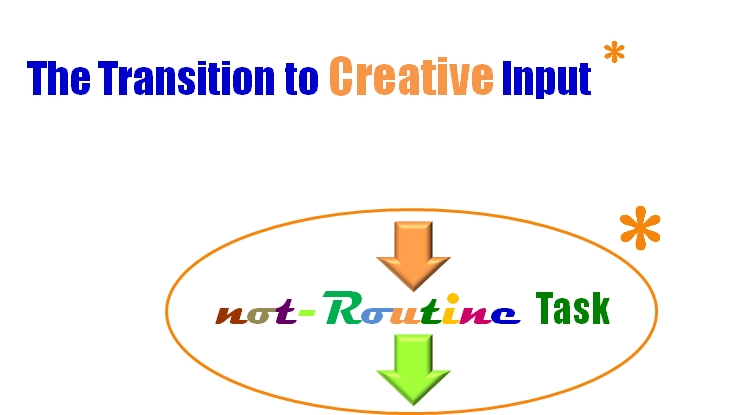|
|
by Rick Baker
On Jun 4, 2013
Dealing with Other People: Making Business Decisions
People are social creatures:
- we live with one another,
- we live near one another in community, and
- we 'work with' one another.
The actions we take at work affect and influence one another. The thoughts we share about work affect one another.
People approach work with differing attitude. Some of us are more serious about work than others. Put another way, for some people work plays an important role in their lives while for others it does not.
Work-life involves a continuous string of dealings with other people.
Boiling it down...we can choose to view other people:
- as very distinct and different (every Man is a stand-alone island),
- as very similar to us,
- as 'things' that can help us achieve our goals, and
- as individuals who are doing their best to deal with their challenges and to achieve their goals.
We may view certain people one or more of these ways while viewing other people in entirely different ways.
In business, we must 'work with people' to achieve what we hope are common work-goals. When we work with people, Decisions can be made 3 ways: Command-Consultative-Consensus. [I favour a 10-3-1 approach.] Command decisions are made by one person, the person with authority. Consultative decisions are made by the person with authority after gathering ideas from others (without being obligated to use any or all of those ideas). Consensus decisions are 'democratic' decisions made by groups of people, who commit to follow the group decision after it is made.
Overlapping these 3 decision choices, business people can treat one another 3 ways:
- as 'tools/things' requiring instructions (essentially, components of process),
- as people requiring help (so they can do better in the immediate term and/or in the future), and
- as objects of criticism (that is, telling or showing them where they are thinking inaccurately or acting badly).
As a business leader...
How do you think about your people?
How do you make decisions?
How do you communicate about the way decisions should be made at your organization?
How do you know your people understand your decision-making process?
by Rick Baker
On May 21, 2013
Now, more than ever, business success relies on a combination of knowing your area of best performance and studying what your clients do.
Most people feel they do not have enough time. This feeling is causing an evolution of business-people relationships.
Relationships between business people are being shocked into evolution by technologies, the three broad categories in this area being:
- new communication media...'social media',
- super-automated process equipment, &
- information-handling software and systems.
Relationships between business people are being shocked into evolution by global commoditization:
- increased local & international competition,
- increased levels of employee turnover, &
- reduced job security.
As this evolution of business relationships is happening a number of trends are adding to the confusion. Key examples include:
With all of this stuff tending to complicate things, to perform best – we must first simplify…then we must build.
For most businesses, value is created when simple tools are placed in the hands of solid work ethic.
And, as a first step we need to seek simple.
Now, more than ever, business success relies on a combination of knowing your area of best performance and studying what your clients do.
by Rick Baker
On May 10, 2013
Edward de Bono is one of my heroes. In my opinion, he is the world's greatest creative thinking educator.
I have written about Edward de Bono and his 'Six Thinking Hats'...'Six Thinking Hats' is an extremely helpful tool for sorting out your thinking and for communicating with others about thinking.
Here's a picture-summary:
Edward de Bono's 'Six Thinking Hats'

I have a de Bono section in my library. My goal is to collect and red all his books. That's a challenge because he has been prolific, writing well over 50 books. I have just completed reading de Bono's 'Six Action Shoes', (1991). 'Six Action Shoes' is an extremely helpful tool for sorting out your actions and for communicating with others about actions.
Here's a picture-summary:
Edward de Bono's 'Six Action Shoes'

These thinking and action tools provide excellent ways to Seek Simple....a Spirited Leaders' philosophy. When thinking can be summarized in 6 ways...that's seeking simple. When action can be summarized in 6 ways...that's seeking simple. And, that's why Edward de Bono is so amazing. He has been able to unleash his genius [and help others do the same] because he is the master in simplifying before choosing how to think, simplifying before choosing how to act, and knowing when and how to be creative. In other books, he illustrates exactly how to be creative. [Our recent thought post 'Taking Curiosity to Creativity' contains de Bono's signature contribution - lateral thinking.]
Now, Seek Simple is one of Spirited Leaders' core philosophies...another is:
Business Contains Only 3 Things: People, Process, & Situations
Much has been posted about People, Process, & Situations.
Now we will show how Edward de Bono's Six Thinking Hats and Six Action Shoes can be incorporated.
Business Contains Only 3 Things: People, Process, & Situations.
Here's the picture...

A snapshot in time during your business day - that's what we mean by Situations. That snapshot will contain people [at least 1, you] and it will contain process [at least 1, your thinking]. Process either involves People or machines/mechanisms/tools [designed by People]. For the time being, let's concentrate on the Processes performed by People. There are only 2 types of Processes performed by People: Thinking and Action. If we embrace de Bono's tools, the Processes performed by People have 12 components: 6 ways of thinking and 6 ways of taking action.
In any Situation, People can decide which of the 12 things they will perform.
Here's the picture...

Those are good questions to ask!
[That's Seeking Simple and finding it.]
[That makes for one very Good Habit.]
by Rick Baker
On Mar 22, 2013
Thought Tweet #700 Tools: things that make hard tasks easier. 1-Page Tools: things that make really-hard tasks easier.
The Thinking Behind The Tweet
OK - quick - Let me hear your 30-Second Elevator Pitch.
Never mind that - quick - What's your business Vision?
No - how about - What's your Differential Advantage?
etc.
These questions are among the ones that stump most business people.
That's why we have tools, especially - 1-Page Tools.
by Rick Baker
On Mar 21, 2013
Some time ago, I wrote,
"When it comes to filling roles at your company, rather than dwelling on who is right and who is wrong, business leaders should dwell on 2 things:
- Character Differences…particularly, the interplay between individual’s egos
- Individual’s Talents…particularly, the extent individual’s talents deliver value to the business" [for more thoughts in that area, see Getting The Right People on Your Bus]
A little later, I wrote,
"In a 2011 Canadian Corporate Culture study, 85% of respondents indicated that cultural fit is more important than necessary skills when hiring.
When you are hiring a person to join your business you must work to understand whether or not they will 'fit in' your business Culture.
That means at least 3 things:
- You must understand your business Culture and the details of its embedded Values and your rules [our Master Rules],
- You must understand the employee-candidate's personal Values, and
- You must determine whether or not the employee-candidate is compatible with our business Culture." [for more thoughts in that area, see Having Values, Delivering Value, & Recruiting Great People]
Why did I write those points?
I wrote them because I have witnessed many people recruiting at the 50% level. I mean, when they are recruiting they do half the work they need to do:
- they cover the tangible-technical aspects of the role, making sure credentials are in place, spending time figuring out the candidate's ability to perform the key of the role, etc. and Tasks
- they fail to cover the intangible aspects of the role such as culture fit, values fit, etc.
A month ago, I was involved in a very-interesting discussion about how to make sure leaders know how to apply the right people-talents to the right-work tasks. To sum up my view, we should not attempt to force round talents into square tasks or square talents into round tasks. Rather, we should spend more time than we now spend making sure we 'customize' roles and tasks to ensure people-talents mesh with the work we are asking them to do. It became clear to me, I was not communicating my thoughts clearly enough. People were interpreting my comments to mean leaders need to go the extra mile then another mile then another...meanwhile followers/workers/staff bore none of the burden.
I did not want people interpreting my views as leaders must fully bend over backwards while everyone else could relax and have it their way.
Now -
There is no Magic Formula For Hiring.
When I say that, I mean:
- We cannot hire with perfection....no matter how thorough we prepare and perform, there is no way to guarantee hiring process perfection
- No candidate will be perfect for the role...i.e., no candidate will be able to perform all aspects of the role perfectly. That applies whether we are referring to the hard-tangible-technical tasks of the role or the soft-intangible-interpersonal tasks of the role.
- We must be diligent - we won't be perfect.
So, we should set simple rules for hiring process. Some of the rules should cover off the people side. Some of the rules should cover off the job-technical side. The rules should include flexibility so we can maximize the meshing of people-talents and role-tasks.
Here are some hiring realities:
- Uncertainty is always the scenario: none of us can foresee the future. The best we can do is make predictions and make adjustments as less-desirable-than-forecast situations arise.
- Waiting for perfection is a luxury few can afford. Working for perfection is a strategy for disappointment.
- Have a thorough hiring process…but do not aim for perfection. Communicate openly…about tangible/technical facts and the intangible aspects of your business culture/environment. Involve many people…so your company and the candidate have the ability to observe one another…over a period of time. Be thorough. And take action.
The bottom line...
We must keep working at improving our hiring.
by Rick Baker
On Feb 28, 2013
Bosses complain about people not taking initiative, not taking advantage of opportunities, and not nipping problems in the bud. Bosses observe people doing things right, following the procedures but failing to pick up the fact that in certain situations following the right procedures takes you to the wrong outcome. As the saying goes, leaders focus on doing the right things while managers focus on doing things right.
And doing things right means following set out procedures.
However, when doing things right fails to satisfy clients or collect the money or generate new sales or other such things bosses and leaders tend to become frustrated and complain about people not taking initiative, not taking advantage of opportunities, and not nipping problems in the bud. When this happens, bosses and leaders want their people to use their heads and do the right things. In other words, they want their people to use some initiative, be innovative, and be creative.
People get confused:
- Should I follow the rules & procedures?
- Should I use my imagination and not follow the rules & procedures?
- Damned if I do; damned if I don't! [and that's not a good way to be thinking]
People get confused and communication gets bogged down and people get into performance ruts.
If you experience situations like this then it is in your best interest to make some changes for the better.
Here is a simple change you can make: Start telling people when you want them to be creative...I mean, start telling them before the action rather than after the fact.
First - before getting people to do the work, identify the parts of the work that are routine and systematize those parts...using step-by-step written procedures....using checklists.
Next - identify situations where creativity is or could be required. For example, you could use the 80/20 Rule: if creativity is required more than 20% of the time when this task/step is performed then flag that task/step as Creativity May Be Required Here. You could use a little orange flag to signal:
Creativity May Be Required Here
When you know a task requires creativity then you can use the words not-Routine Task to make that step stand out from routine tasks...you can use orange to signal creativity. [see orange arrow below]
Straightforward visual signals/cues will help your people know when they should side-step 'normal' procedures and check for opportunities to be creative & do the right thing. Use these visual signals/cues in your work-process checklists, flowcharts, role descriptions, etc.
Here's the picture...

|
|